Henri Matisse was a painter and sculptor active in 19th century France.
He is considered a representative painter of the "Fauvisme" (Fauviste) art movement, which was further advanced from the revolution of Picasso and others, with its unrestrained colors.
He has left a tremendous influence on later artists such as Andy Warhol, and is a great painter who continues to inspire contemporary living artists.
Characteristics of Matisse's works
A group of works using "cut-outs"
In his later years, Matisse left behind many cut-and-paste works made of colored paper.
Although Matisse used oil paints, watercolors, and other mediums, the use of colored paper allowed him to pursue "the purification of color and form to the utmost limit.
In the words of Matisse, "In cut-outs, you can make drawings in colors," he emphasized thinking in colors, skipping the process of "applying paint.
Matisse's Sense of Color
The greatest characteristic of Matisse's paintings, which are characterized by his great love of nature, is their rich world of color.
If Picasso, through his cubism, brought about a revolution in art history that liberated form from reality, Matisse was a revolutionary who liberated color from reality.
By pursuing vivid and simple colors, he created a pure worldview.
Matisse's Life
Matisse as a child
Matisse was born in 1869 to a wealthy grain merchant in the northern French town of Le Cateau-Cambresi.
At the age of 18, he went to Paris to study law and, after qualifying, returned to his hometown to work as a court administrator.
At the age of 20, Matisse contracted appendicitis and was greatly moved by a work of painting that his mother brought to him while he was in the hospital, and he took up painting as a result. He later described it as "a kind of paradise" and decided to become an artist, much to his father's dismay.
Art School Years
In 1891, he returned to Paris again and began to study art in earnest under William-Adolphe Bouguereau at the Académie Julian and Gustave Moreau at the Académie Nationale des Beaux-Arts.
At first, he painted still lifes and landscapes in a traditional style, and his so-called good painting skills came along.
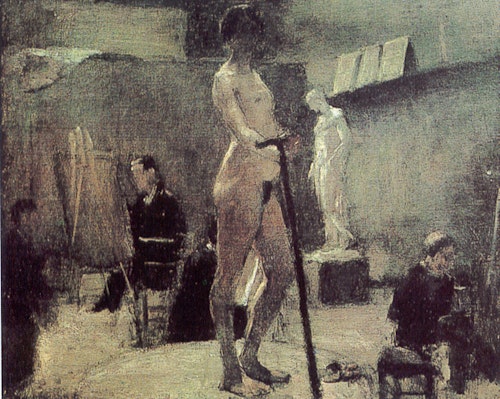
Drawing in Gustave Moreau's studio, 1894 - 95
Matisse was influenced by Old Masters such as Chardin, Poussin, and Antoine Watteau, contemporaries such as Manet, and Japanese art.
Chardin, especially famous for his still lifes, was one of Matisse's most admired painters, and we know that he copied his work at the Louvre when he was an art student. Later, as a painter of color, Matisse developed paintings that no one had ever seen before, but his motifs were often interior paintings and still lifes, and Chardin's influence can be seen in them.
The Impact of Van Gogh's Paintings
In 1896, at the age of 27, Matisse visited the Australian painter John Russell on the island of Belle-Ile, off the coast of Brittany.
Through Russell, Matisse learned about Impressionist paintings and Van Gogh's work, and when he received one of Van Gogh's drawings, he completely abandoned his traditional style of painting and became obsessed with Van Gogh's fascination with color.
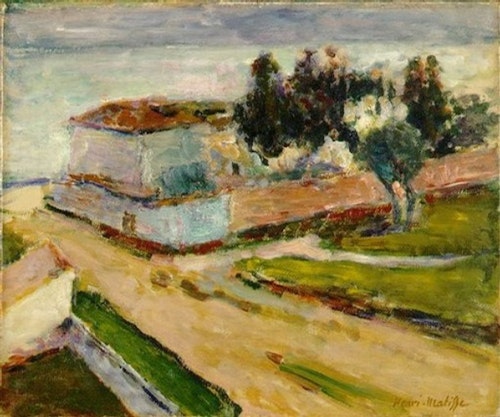
The Pink Wall, 1898.
It was here that Matisse learned color theory from Russell and underwent a major transition as a painter.
In the same year, he exhibited five works at the Salon National des Beaux-Arts in France, two of which were purchased by the government, and began to enjoy rapid acclaim.
Influences of Cézanne, Turner, and Signac
In 1898, on the advice of Camille Pissarro, the father of the Impressionist group, he went to London to study the paintings of Turner, an English painter active in the 18th and 19th centuries.
Returning to Paris the following year, he made friends with André Derain, Jean Pouilly, and Jules Flandrin, all painters of the same generation.
.jpg?w=500&h=595)
Tableware on the Table, 1900, Hermitage Museum
Matisse was so devoted not only to his work but also to buying the works of artists he admired that he was deep in debt. In his house were plaster busts by Rodin, paintings by Gauguin, drawings by Van Gogh, and Cézanne's "Three Bathers," among others.
Matisse, who especially sympathized with Cézanne's screen composition and sense of color, was to take over the revolution in art that Cézanne had solitarily promoted.
Also in his thirties, Matisse learned from Paul Signac, a famous pointillist, the technique of brushstroke division (a technique in which bright paint is placed with each fine touch, so that when viewed from a distance, the colors appear to mix with each other). Matisse produced many paintings using the division technique at this time.
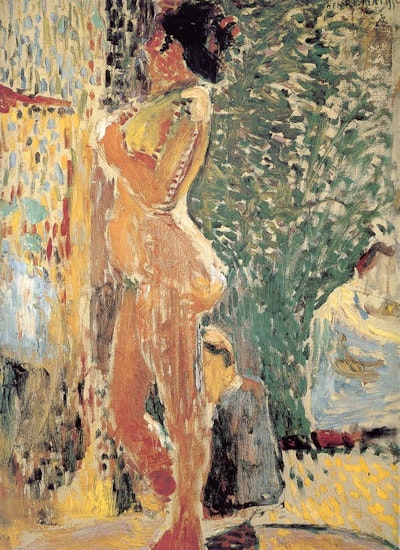
Study for a Nude, 1899
The Beginning of Fauvism
Beginning of Fauvism with Derain
Around 1900, Matisse and his friend André Derain began the artistic movement known as Fauvisme. Other members of this movement included Rouault, Vlaminck, and Dufy.
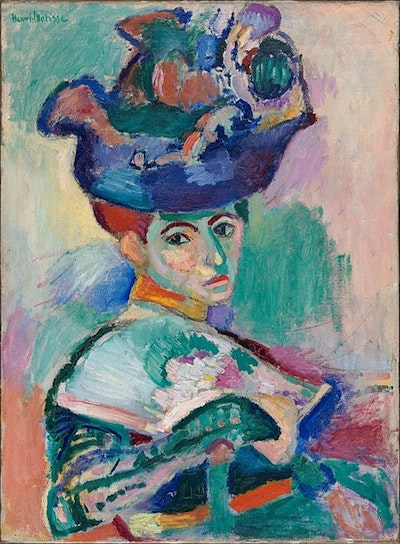
Woman with Hat, 1905, San Francisco Museum of Modern Art
By 1908, however, he had held three exhibitions, but they were not well received.
The peculiar name "Fauvisme" (Fauvisme, or "Fauvisme of the Beast School") was derived from an art critic, Vauxcell, who saw an exhibition held in a room at the Salon d'Automne in 1905 and ridiculed it as "like a cage of wild beasts.
This is very similar to the way the name "Impressionism" was given to the work, which was established shortly before this, based on an expression that was also negatively criticized by critics when the Impressionists emerged, who said that the paintings only depicted impressions of painting.
(Actually, there is also the name "Baroque art" dating back to the 17th century. (In fact, there is also the term "baroque art," which dates back to the 17th century.) Likewise, baroque means "distorted pearl," and was originally used critically as a conflation of the Renaissance style. (The phenomenon of the term's continued use, and its acclimation to its place in the history of art, is a frequent occurrence in the history of Western art.)
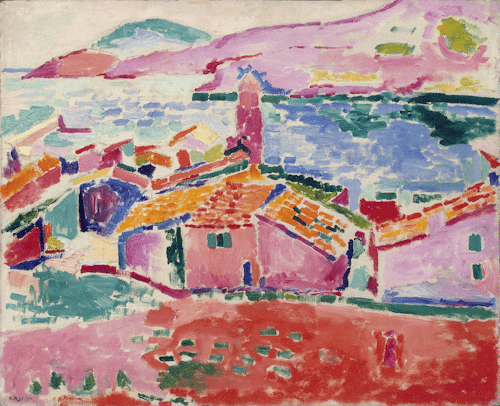
The Roof of Koriur, 1905, Hermitage Museum
Continuing to Create, Undeterred by Adversity
Although his exhibitions as a Fauvisme artist continued to fail, most of the important works that would later be considered Matisse's masterpieces were painted between 1906 and 1917, indicating that he was full of creative energy.
He not only studied French art, but also continued to incorporate new elements through his voracious art research, including visits to Africa to study African art and primitivism (primitive art).
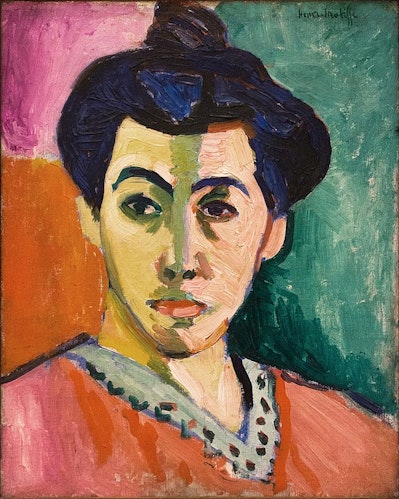
One of Matisse's most famous works, "Portrait of Madame Matisse (Green Lines)," 1905, National Art Gallery of Copenhagen
%2C_Museum_of_Modern_Art.jpg)
One of Matisse's most famous works, "Dance," 1909, MoMA, New York
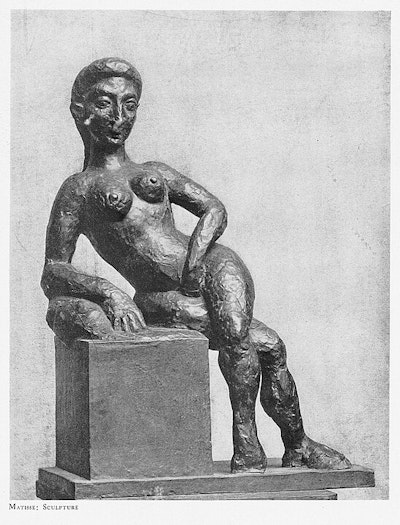
Matisse was also an ambitious sculptor. Figures d'écoratifs, 1908.
Encounter with Picasso, a friend for life
A chance encounter with Picasso
In 1906, Matisse met Pablo Picasso, 11 years younger than himself.
The two would later form a friendship that would last a lifetime, and they were also competitors. They are often compared, as they are two of the most important artists in the history of art.
The main difference between Picasso and Matisse is that Matisse painted from nature, while Picasso often painted from his imagination.
In terms of subject matter, women and still lifes were often painted in both cases, while Matisse's style was to paint the figures in a well-defined interior.
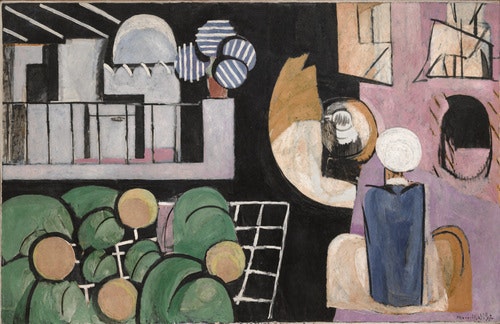
Moroccan, 1915-16, Museum of Modern Art, New York (MoMA)
Interaction with Guillaume Apollinaire and other poets
Matisse met Picasso at the Salon organized by Gertrude Stein, an influential bourgeois. It was here that many artists gathered, including painters, poets, and sculptors. Poets such as Guillaume Apollinaire, Marie Laurencin, and Henri Rousseau were there.
Matisse spent the years 1912-16 in Morocco, where he produced many tableaux and drawings. Motifs such as odalisques and goldfish boxes can be seen after this trip to Morocco.
%2C_oil_on_canvas%2C_130.8_x_90.5_cm%2C_Museum_of_Modern_Art.jpg?w=400&h=592)
Blue Window, 1913, MoMA, New York
Cutouts from the last years of his life
In 1941, Matisse was diagnosed with abdominal cancer and underwent surgery.
As a result of the surgery, he was confined to a wheelchair and frequently confined to bed. His previous means of expression, oil painting and sculpture, were no longer physically feasible, and he was forced to seek a new type of means of expression.
This is how he came across paper cutouts made of colored paper.
He cut paper that had been pre-painted with gouache by his assistant into different colors and sizes, and combined them to form lively compositions.
What started out as small works eventually developed into murals and entire rooms. The result was a unique, three-dimensional complexity and a new art form that was neither painting nor sculpture. Paper cutouts became Matisse's iconic means of expression.
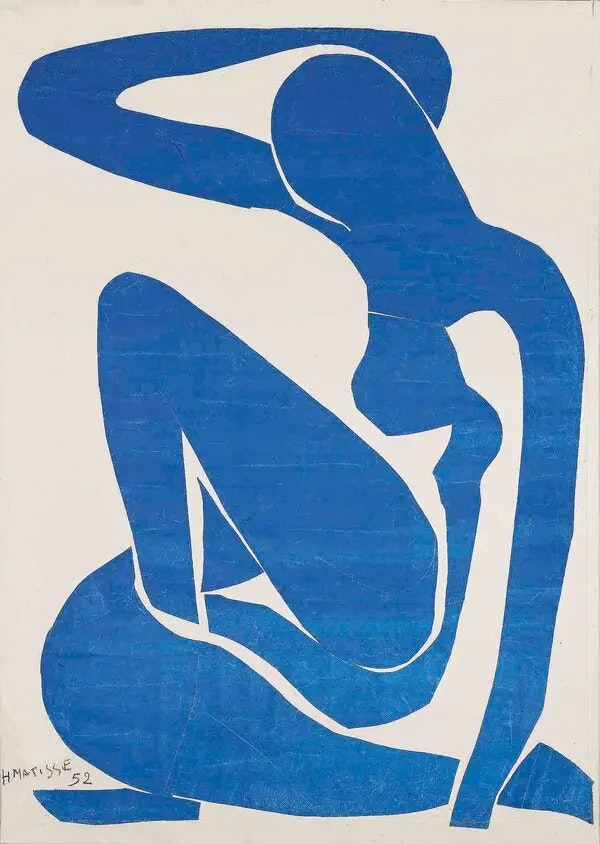
View TRiCERA ART's latest works
TRiCERA ART members enjoy a variety of privileges and preferences.
- Discounts, including members-only secret sales and coupons
- Create My Collection by registering your favorite artists
- Receive updates on popular artists, exhibitions, and events
- Receive a weekly newsletter with selected art
- Personal Assessment to find out what kind of art you like.
Please register as a member for free and receive the latest information.
Free Member Registration